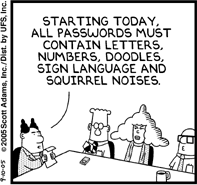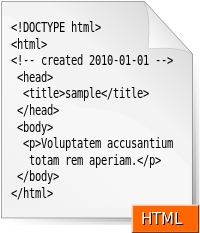
The question of whether there is life in other places in the Universe requires a fundamental question to be answered: What is the definition of life?
This is not a spiritual discussion on Life and its meaning, but for those who thought it was, do read on. Fresh viewpoints are always stimulating for spirituality.
People tend to have very varied and often biased views with regards to their definition of Life. Most would think of a grotesque humanoid form with a head, two arms, two legs as an instant reaction to the question, while others might take more colorful forms: octopuses, crabs, giant ants etc. These have been covered extensively by countless science-fiction material, books, movies etc. These view points are flawed at several places:
a) These replies do not even answer the question: "What is the definition of life". These just provide the answer to the specific question: "What would living beings look like in some alien planet". A sea of difference.
b) They all assume that the physical and environmental conditions required for life are similar to that of the Earth. The fact that life could exist at 12,000 degree centigrade is just absurd, in these viewpoints. But living cells have been found on Earth in the most extreme conditions [
1].
c) They all assume that "Life" is Carbon-based, and in-fact, material. What I mean is, they assume that the dependence of Living beings on Water, Oxygen and Nitrogen is universal. This "life" that people talked about involved Amino acids and nitrogenous compounds forming the basic genetic material and cell structures that coordinated to form the diverse life-forms that we know of. But this entire set of known life-forms are mostly based on Nitrogenous compounds with dependence on Hydrogen, Oxygen and Carbon. Assuming that life could evolve only from these is a precarious one.
I do not claim to have the correct answer. The purpose of this article is just to try to broaden the scope of thought and opinion of what is living and what is not.
What is Life? The property that makes entities living. Thus if a set of rules determine that the entity in question is "living", then it has "Life". Hence the question narrows down to determining the set of rules that declare an entity living or non-living.
This is where things get fuzzy. I'm afraid there will never be a conclusive, definitive and "correct" answer, but just our viewpoints. Just like our viewpoints of what is "right" or "wrong" determines laws and so-called morality.
I think an expanded and relatively broad-minded checklist for a single "living entity" would be:
a) Should be responsive to external environments and stimulib) Should be able to self-sustain for as long as possible in the environmentc) Should be able to change itself and adapt in order to continue existenceIs reproduction a necessity to certifying something "living"? Probably not. Because a single male or female of the human species, or any sexually reproducing species, cannot reproduce without involving two entities. Thus a single man would not be able to reproduce alone, and would hence be declared non-living by following that logic.
Note: Do not read the following lines if you have had enough mind-expansion for the day.
This expanded view brings us to a series of interesting ideas. Could life forms exist in electromagnetic waves? Why make the assumption that life needs to have material composition? Electromagnetic waves are doomed (in a way) to keep propagating ahead in space until their energy is absorbed by any entity they collide with. But what prevents us from calling a man who keeps running non-stop until he vaporizes by running into a blast furnace as living? You'd say he's living even though he's constantly running non-stop because he can change himself, he's interacting with the environment and external stimuli, and because he is... well a man!
But similar is the case of an electromagnetic wave. Its a bundle of energy, like every man or for that matter, "matter". If some quirks of nature in some part of the Universe would cause these bundles of energy to self-sustain on loss of energy, and suit themselves to the surroundings, all while running along at the speed of light constantly, would they be called Living? I believe they would, and should.
Cheers
~
ShashankPS: Image: X-ray of the left hand of a ten year old boy with
polydactyly.



























